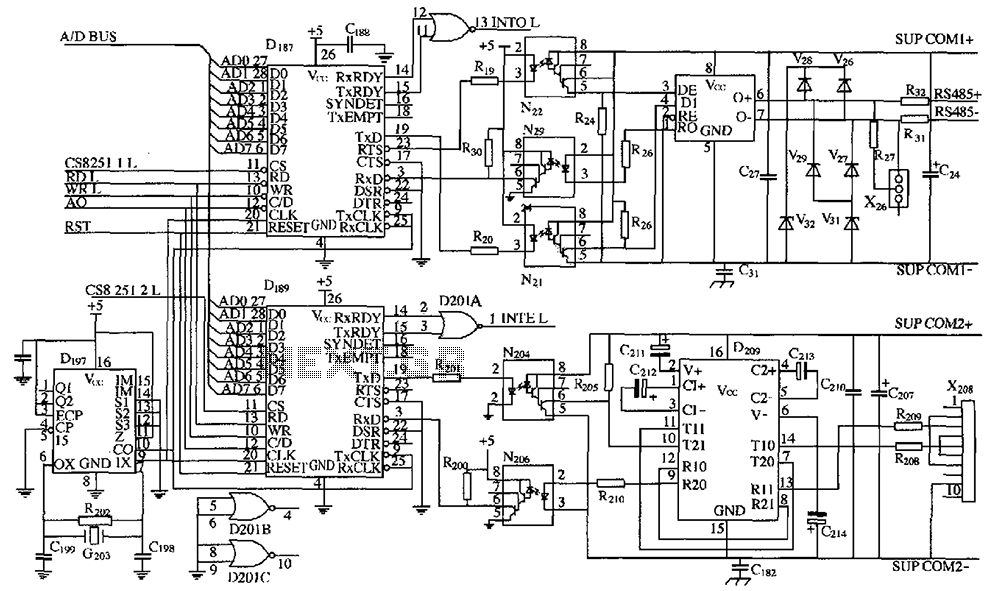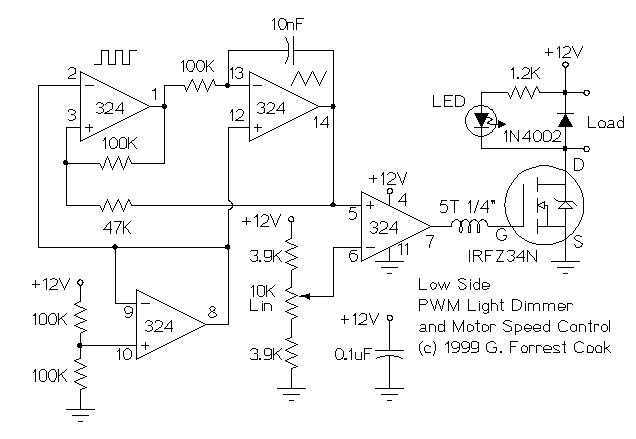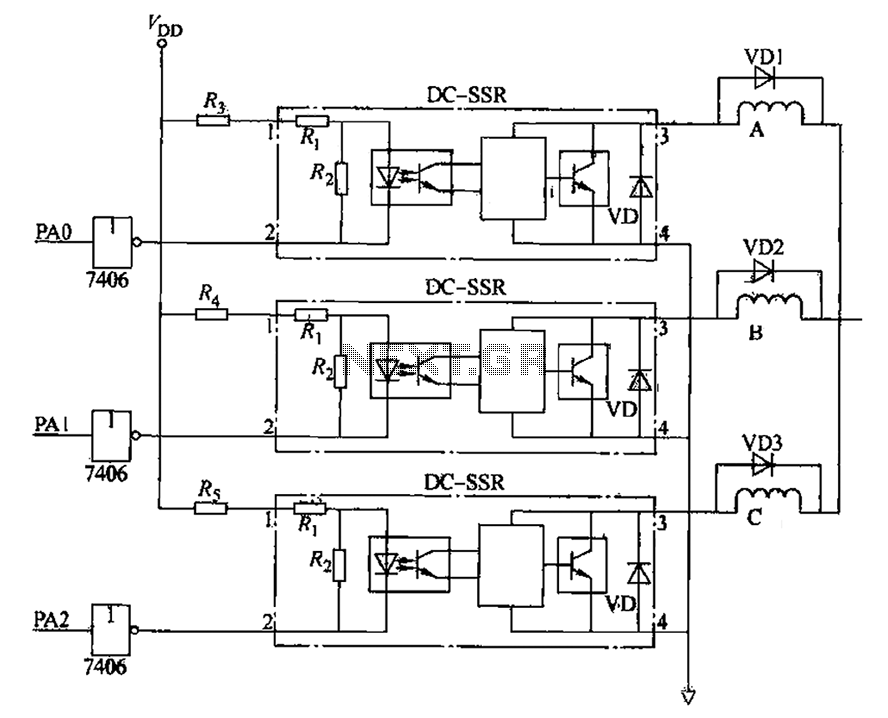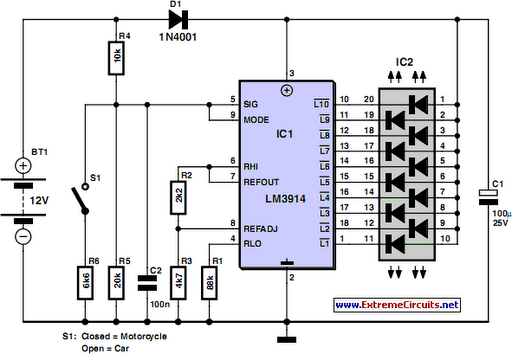
Three-phase asynchronous motor PTC protection circuits
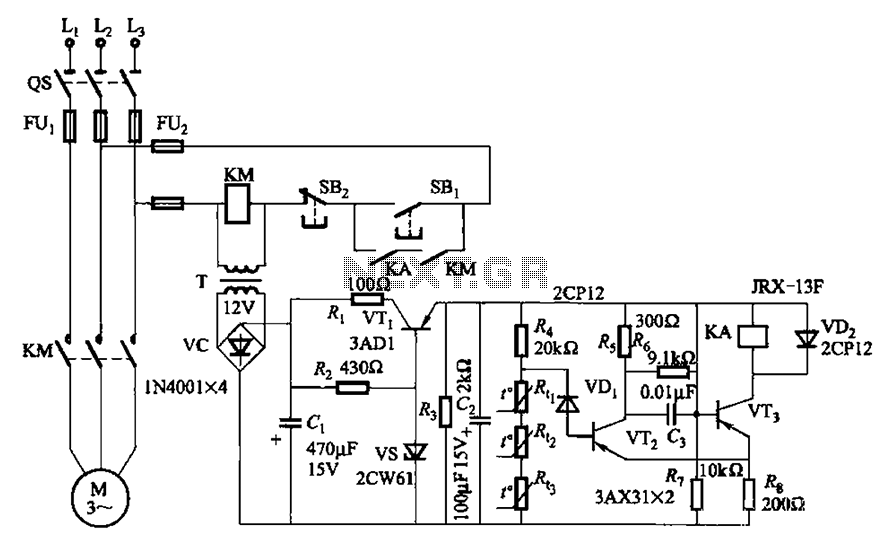
A P-type transistor (VT2, VT3) and other components form a common emitter-coupled trigger, functioning as a Schmitt trigger device. This setup serves as a switching circuit to detect changes in the resistance of a PTC thermistor, thereby controlling the action of relay KA. The circuit also includes a transistor (regulator) VTi and additional components that create a simple series regulator, which helps manage supply voltage fluctuations.
The described circuit utilizes P-type transistors VT2 and VT3 configured in a common emitter arrangement, effectively creating a Schmitt trigger that provides hysteresis in the switching action. This characteristic is essential for applications where noise or minor fluctuations in the input signal could lead to undesired switching. The PTC thermistor's resistance change in response to temperature variations is monitored, allowing the circuit to react to specific thermal conditions by activating relay KA.
Relay KA serves as an output device that can control larger loads, making it suitable for applications such as temperature control systems or safety devices. The interaction between the thermistor and the Schmitt trigger ensures that the relay is only activated when the temperature crosses predefined thresholds, thus preventing frequent toggling due to small temperature changes.
Furthermore, the inclusion of the voltage regulator (VTi and associated components) provides stability to the circuit by mitigating supply voltage variations. This regulator is designed as a simple series type, which is effective in maintaining a constant output voltage despite fluctuations in the input supply. The overall design emphasizes robustness and reliability, essential traits for electronic control systems in varying environmental conditions.
The combination of these elements results in a well-rounded circuit capable of precise temperature monitoring and control, with built-in protections against electrical noise and supply voltage instability. By the PI.] P-type transistor VT2, VT3 and other components common emitter-coupled trigger (ie, Schmitt trigger device), equivalent to a switching circuit to detect a change in resistance of the PTC thermistor and the control relay KA action. Figure, by the transistor (regulator) VTi, regulator and other components vs a simple series regulator link for supply voltage fluctuations occasions.
The described circuit utilizes P-type transistors VT2 and VT3 configured in a common emitter arrangement, effectively creating a Schmitt trigger that provides hysteresis in the switching action. This characteristic is essential for applications where noise or minor fluctuations in the input signal could lead to undesired switching. The PTC thermistor's resistance change in response to temperature variations is monitored, allowing the circuit to react to specific thermal conditions by activating relay KA.
Relay KA serves as an output device that can control larger loads, making it suitable for applications such as temperature control systems or safety devices. The interaction between the thermistor and the Schmitt trigger ensures that the relay is only activated when the temperature crosses predefined thresholds, thus preventing frequent toggling due to small temperature changes.
Furthermore, the inclusion of the voltage regulator (VTi and associated components) provides stability to the circuit by mitigating supply voltage variations. This regulator is designed as a simple series type, which is effective in maintaining a constant output voltage despite fluctuations in the input supply. The overall design emphasizes robustness and reliability, essential traits for electronic control systems in varying environmental conditions.
The combination of these elements results in a well-rounded circuit capable of precise temperature monitoring and control, with built-in protections against electrical noise and supply voltage instability. By the PI.] P-type transistor VT2, VT3 and other components common emitter-coupled trigger (ie, Schmitt trigger device), equivalent to a switching circuit to detect a change in resistance of the PTC thermistor and the control relay KA action. Figure, by the transistor (regulator) VTi, regulator and other components vs a simple series regulator link for supply voltage fluctuations occasions.
